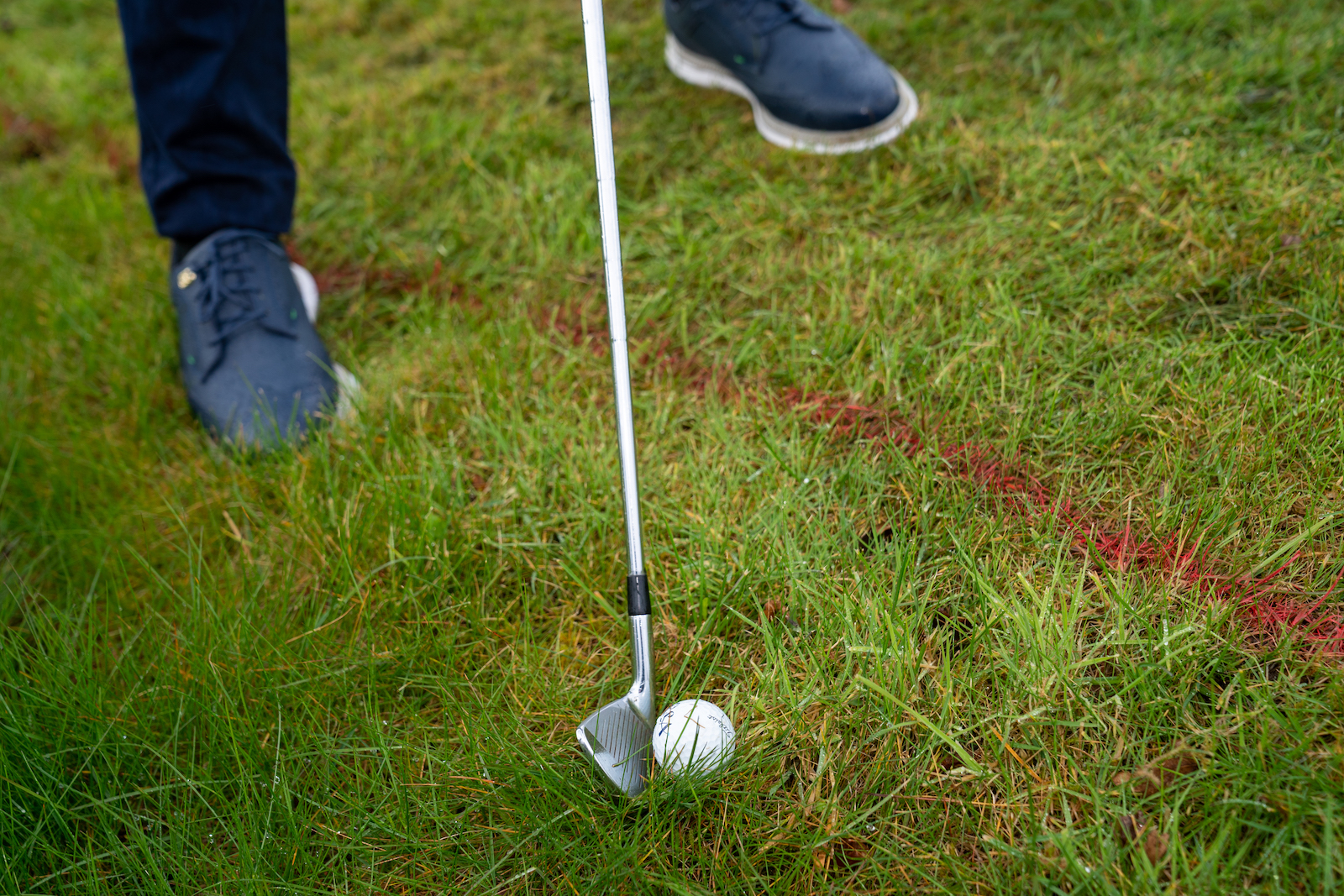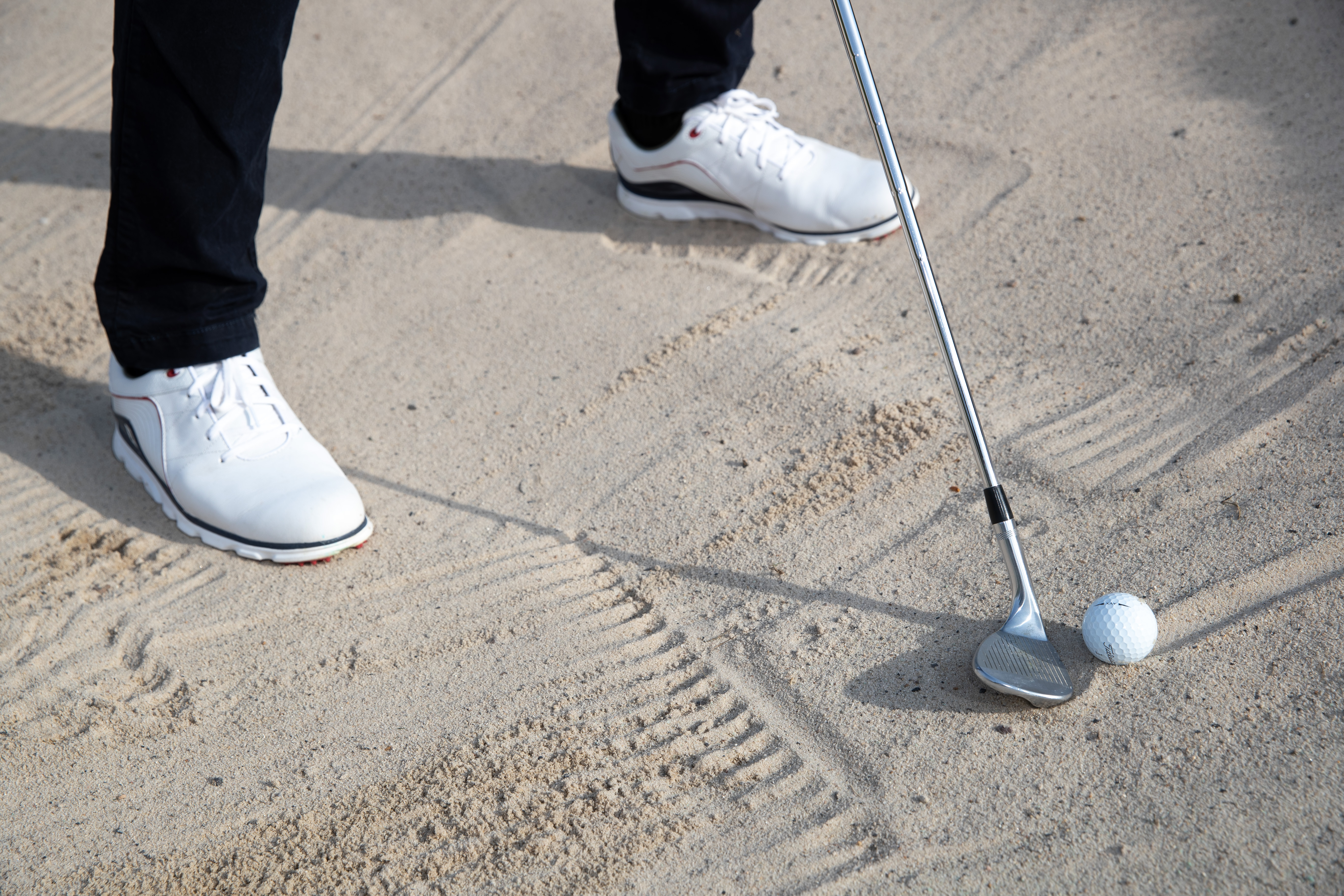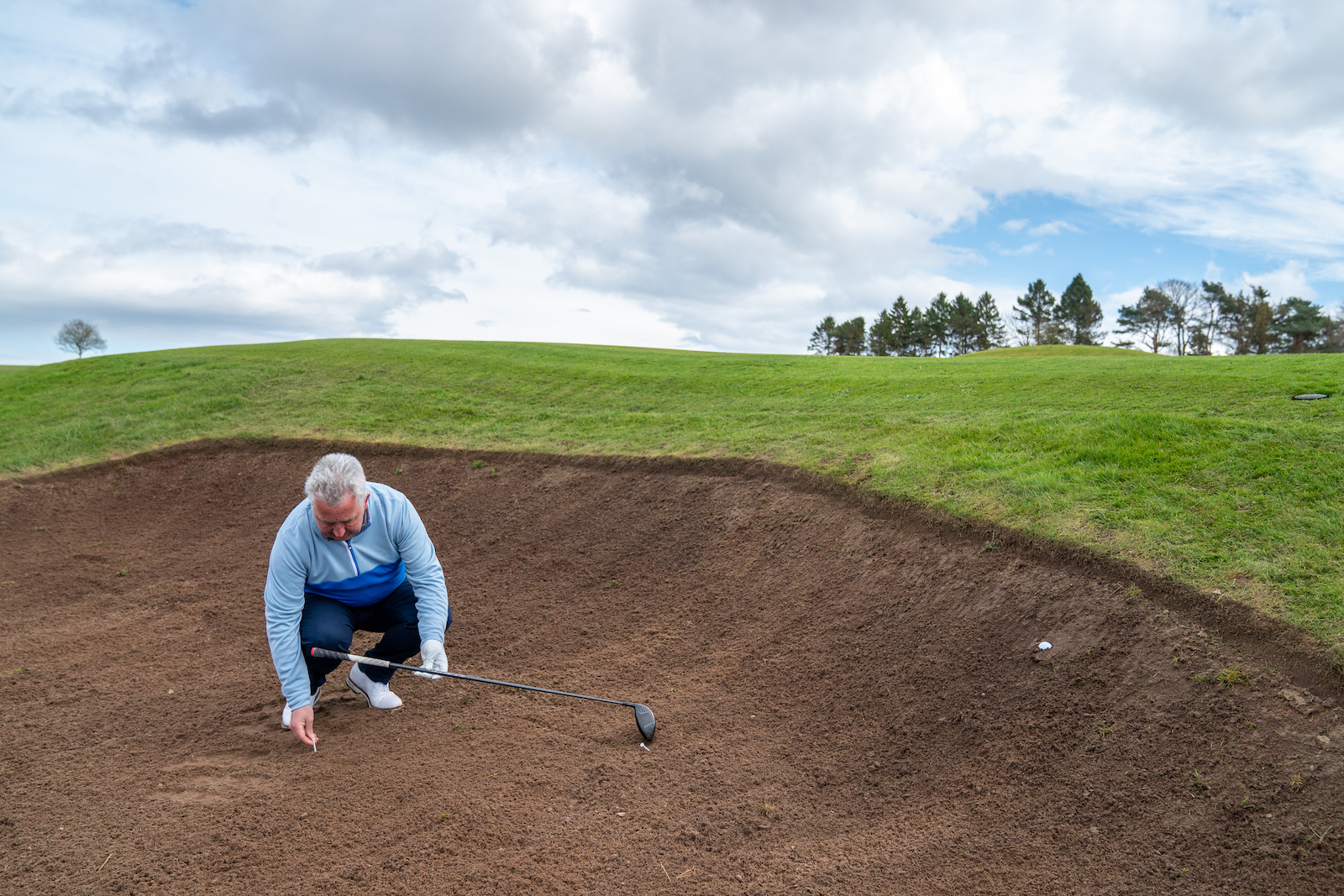Grounding Your Club In Bunkers And Penalty Areas... What You Need To Know
What does 'grounding your club' mean and can you do it in bunkers and penalty areas? We sum it all up here...


When the major 2019 Rules revisions came in, some of the Rules regarding bunkers and penalty areas (formerly ‘water hazards’) were relaxed to varying degrees, but not in precisely the same ways. For example, you may now remove loose impediments from both bunkers and penalty areas - a major change from the pre-2019 Rules - as long as you don’t cause your ball to move in the process. But when it comes to grounding your club, the answer differs between bunkers and penalty areas.
First, what do the Rules mean by “grounding the club”? You need to turn to Rule 8.1b for the answer. This covers actions that are allowed in preparing to make a stroke. Rule 8.1b(4) says you may…
Ground the club lightly right in front of or right behind the ball. “Ground the club lightly” means allowing the weight of the club to be supported by the grass, soil, sand or other material on or above the ground surface.
But this does not allow:
• Pressing the club on the ground, or
• When a ball is in a bunker, touching the sand right in front of or right behind the ball (see Rule 12.2b(1)).
Previously you couldn’t touch the ground or water with your club or hand in a water hazard (now penalty area) and you certainly couldn’t take a practice swing that touched the ground. Now you can, just as you can elsewhere in the general area of the golf course.

This is now fine in a penalty area as long as you don't press anything down or improve the conditions affecting your stroke
However, as the above Rule indicates, when it comes to bunkers, you still can’t touch the sand with your club right in front of or behind your ball before playing. Neither can you make practice swings that touch the sand in the bunker in which your ball is lying before playing nor touch the sand with your club on your backswing. The penalty would be the general penalty under Rule 12.2.
Subscribe to the Golf Monthly newsletter to stay up to date with all the latest tour news, equipment news, reviews, head-to-heads and buyer’s guides from our team of experienced experts.

There is still a penalty for touching the sand in front of or behind your ball in a bunker
Interestingly, though, you may now take practice swings that touch the sand in any bunker other than the one in which your ball is lying (as long as you don’t unreasonably delay play), even a different bunker right beside the one in which your ball is lying.
Going back to penalty areas, what you can’t do, of course, is cause your ball to move as a result of grounding your club. That will still attract a one-stroke penalty under Rule 9.4b. You must then also replace the ball where it was lying before playing. So, always take great care around your ball in a penalty area (and, indeed, elsewhere!) when the lie is looking a little precarious to avoid an unnecessary penalty for causing your ball at rest to move when grounding your club, taking a practice swing or removing a loose impediment.

Practice swings that touch the ground in a penalty area are fine as long as you don't cause your ball to move
Just as elsewhere in the general area, it’s worth reiterating that you can’t do anything that might be deemed to be improving the conditions affecting your stroke – for example, pressing long grass down right behind your ball in direct breach of Rule 8.1b(4) as mentioned above. For the full list of prohibited actions, see Rule 8.1a.
Finally, the Rules do also adopt a common sense approach with regard to bunkers, so while you may not ground the club in preparing for your shot, there would be no penalty for a club touching the sand when:
* Smoothing the bunker to care for the course

Touching the sand with your club in a bunker while measuring relief is fine
* Placing clubs in the bunker (whether by throwing or setting them down)
* Measuring, marking, lifting, replacing or taking other actions under a Rule
* Leaning on a club to rest, stay balanced or prevent a fall.

There is no problem doing this to retain your balance or prevent a fall
See Rule 12.2b(2) for the full details.

Jeremy Ellwood has worked in the golf industry since 1993 and for Golf Monthly since 2002 when he started out as equipment editor. He is now a freelance journalist writing mainly for Golf Monthly. He is an expert on the Rules of Golf having qualified through an R&A course to become a golf referee. He is a senior panelist for Golf Monthly's Top 100 UK & Ireland Course Rankings and has played all of the Top 100 plus 91 of the Next 100, making him well-qualified when it comes to assessing and comparing our premier golf courses. He has now played 1,000 golf courses worldwide in 35 countries, from the humblest of nine-holers in the Scottish Highlands to the very grandest of international golf resorts. He reached the 1,000 mark on his 60th birthday in October 2023 on Vale do Lobo's Ocean course. Put him on a links course anywhere and he will be blissfully content.
Jezz can be contacted via Twitter - @JezzEllwoodGolf
Jeremy is currently playing...
Driver: Ping G425 LST 10.5˚ (draw setting), Mitsubishi Tensei AV Orange 55 S shaft
3 wood: Srixon ZX, EvenFlow Riptide 6.0 S 50g shaft
Hybrid: Ping G425 17˚, Mitsubishi Tensei CK Pro Orange 80 S shaft
Irons 3- to 8-iron: Ping i525, True Temper Dynamic Gold 105 R300 shafts
Irons 9-iron and PW: Honma TWorld TW747Vx, Nippon NS Pro regular shaft
Wedges: Ping Glide 4.0 50˚ and 54˚, 12˚ bounce, True Temper Dynamic Gold 105 R300 shafts
Putter: Kramski HPP 325
Ball: Any premium ball I can find in a charity shop or similar (or out on the course!)